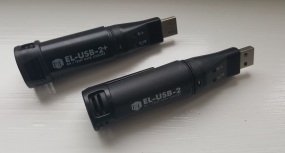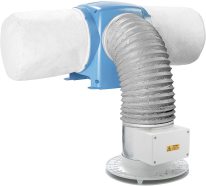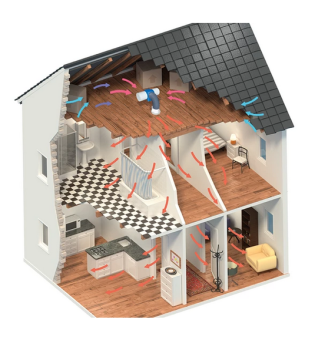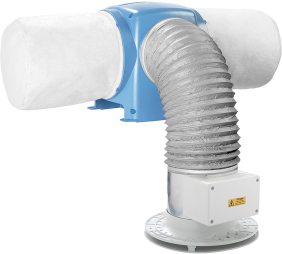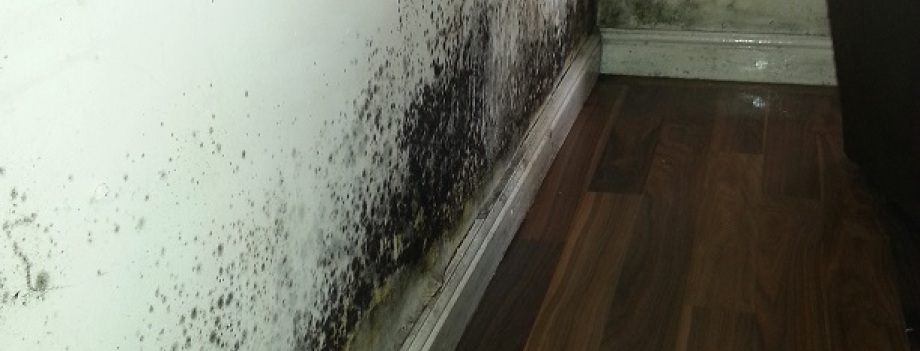
Condensation Control & Ventilation Solutions in Derbyshire (Derby) & West Nottinghamshire
One of the most common causes of dampness in buildings is ‘condensation’.
What is condensation and how does it occur?
Condensation dampness is a condition that affects many homes and has become a major cause of environmental dampness within properties. Condensation is particularly common in homes which are poorly heated and poorly insulated and usually gets worse in the colder winter months i.e. ’the condensation season’.
Quite simply, condensation is water that is released from moisture laden air (When the dew point is met) and deposited on cold surfaces and is usually seen as a problem during the colder winter months. It is often seen on windows being more noticeable on cold mornings, and possibly on external walls.
Condensation is also found where air movement is restricted, such as in corners of rooms, behind items of furniture placed against walls and even in wardrobes or cupboards. Its presence can be first indicated by the development of black spot mould growth on walls and ceilings, and even furniture, clothes and other fabrics.
How do you solve condensation problems?
In order to keep a property free from condensation/high atmospheric moisture levels, there needs to be a good balance of heating, good insulation, ventilation and reasonable moisture production.
Condensation Control Strategies:
- Adequate insulation - Will slightly reduce the risk of surface condensation from occurring and will help retain the warm air within the property.
- Adequate heating throughout the property in the colder winter months will help prevent surface condensation and will increase the amount of moisture that the air can hold.
- Adequate ventilation will help remove excess moisture from the property.
- Try to manage and reduce the amount of moisture produced. Please read the attached Property Care Association leaflet on dealing with condensation for some useful tips in managing moisture production within the home.
Read our latest BLOG post - How to prevent ventilation equipment being badly installed within your home.
Find the Real Cause of your Condensation Problem with our Data Logging Service
Do you want to get a real insight into what is causing condensation and mould problems in your property?
If you do, read all about our condensation data logging service. The only way to get a true picture of what is really happening in your home.
PCA Video - Importance of Ventilation
Condensation Control (Ventilation) Methods
Positive Input Ventilation (PIV) Units - What are they and how do they work?
PIV units have been preventing and curing condensation dampness related problems in homes for decades. They are also used to control other indoor air pollutants and have even proven to be an effective means for reducing Radon gas in some properties.
A positive input ventilation system gently forces air from the loft around a building (Roof Type). It reduces humidity and eliminates condensation, black mould and mildew. It is an effective and inexpensive way of eliminating black mould and takes maximum advantage of solar gain and warm air stratification.
Overall savings in central heating costs may be possible due to the recirculation of warm air at ceiling height.
The units are idea for most domestic properties, and also for second or holiday homes that are used infrequently.
The PIV unit is positioned in the loft above the landing in a house or central hallway of a bungalow, the system then re- circulates air around the property.
For buildings without a roof space, a wall mounted PIV unit is available. The unit is normally placed within a central hallway.
As mentioned above, all properties are unique and therefore it is important to make sure that the PIV unit being installed is suitable for the property. Where a property is not suitable, we may have other ventilation solutions which could be installed, such as de-centralised (Extract Fans) and a centralised MEV unit.
When we undertake a ventilation survey, our surveyor will discuss the different types of units to help you decide which is best for your property.
To arrange a ventilation/ condensation control survey or quotation - Call DERBY 01332 960160 - MATLOCK 01629 352019 or use our online contact form.
DRIMASTER ECO HEAT HC (PIV UNIT)
to standby mode (no airflow). Once installed, the airflow can be set to suit the house size and if required, the way it responds to the temperature changes within.
The unit also features a heating component. This will temper the air which is distributed through the property via the ceiling diffuser, thus ensuring a comfortable living environment. This pioneering design sees the low watt heater (400w) react efficiently and effectively, guaranteeing an economically friendly product.
The controls to the unit are situated on the diffuser.
- Nuaire Drimaster ECO (Hall Control with 400w Heater) - £1,050.00 including VAT (Supplied & Fitted)
Already have a PIV unit and require a service?? Check out our PIV Unit Servicing Page for more information.
Continuos Extract Ventilation (Centralised & De-Centralised Options)
De-Centralised Option
A de-centralised ventilation system involves the installation of individual fan units being fitted in the wet rooms of a property.
A wet room is classed as any room which produces excess moisture such as a Kitchen, Bathroom, Utility Room, En-suite and Toilet Room.
Each of these fans is ducted to the outside in order to remove the extracted moisture. This is normally through the external wall or through the roof to a tile/soffit vent.
(De-Centraslised) Continuous Running Extract Fan with Humidity Sensor (Nuaire Faith)
The NUAIRE FAITH is a compact, filterless, continuously running extract fan.
The fan has 3 running modes:
1) Trickle mode. (Normal running mode)
2) Comfort Boost Mode. (Activated by high humidity levels)
3) Boost Mode. (Activated by the pull cord or separate switch)
The fan has humidity sensors, which boosts the functionality of the fan when the amount of moisture in the room exceeds normal levels. If the humidistat is activated (Normally at 65 % RH - Relative Humidity), the unit automatically runs at comfort boost speed until humidity levels drop below the selected threshold.
These type of fans operate best when ducted straight out of a wall. They can also be installed on a ceiling, but the duct run to the outside of the building must be as short as possible so as not to affect the performance of the fan.
These fans should be fitted to wet rooms only (Kitchens, Bathrooms, Utility Rooms etc).
The fans are very quiet and the running costs are very low.
Centralised Option
Centralised Mechanical Extract Ventilation (MEV) System
An MEV ventilation provides simultaneous, low-level extraction from kitchens, bathrooms, shower rooms, utility rooms, and toilets to a central extract fan via a system of ductwork and grilles.
The extracted air is discharged to the outside via a single duct and grille/cowl.
The units are capable of extracting from multiple wet rooms.
Most MEV units have a built-in humidistat, allowing the unit to automatically adjust speed when humidity is high.
The MEV unit is very quiet and low cost to run.
These systems are great for bungalows. It is possible to fit in a 2-storey house, but it is a lot harder to feed the ductwork through the house to the downstairs rooms.
MVHR - Mechanical Ventilation Heat Recovery (Extract and Supply System with Heat Recovery)
To arrange a ventilation/ condensation control survey or quotation - Call DERBY 01332 960160 - MATLOCK 01629 352019 or use our online contact form.


